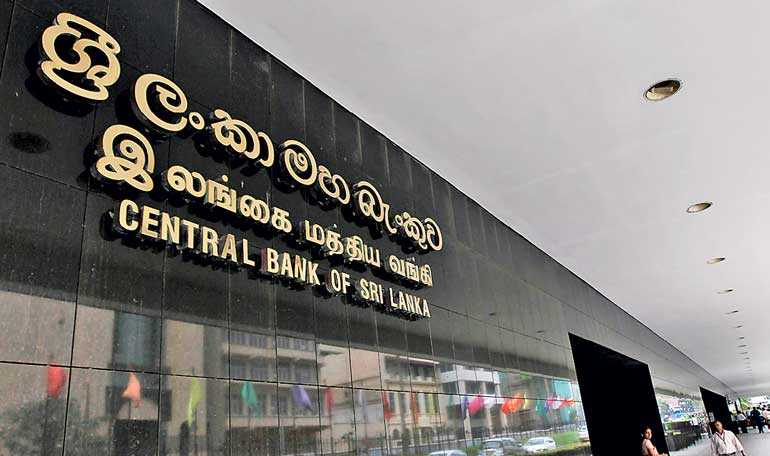Sunday Nov 16, 2025
Sunday Nov 16, 2025
Tuesday, 12 March 2019 00:00 - - {{hitsCtrl.values.hits}}

While this column has recommended an expansion in budget deficit, the question arises, how would the expanded deficit be financed? It would be interesting to note the strategies adopted internationally during times of economic challenges.
The famous quantitative easing of the developed world
During the global financial crisis in 2008 – 2009 the developed world resorted to what is called ‘Quantitative Easing’ to prevent a total economic collapse and to revive the economies.
In the USA, the Federal Reserve started buying Treasury Notes, Mortgaged Backed Securities and Bank Debt in late 2008. The size of the Fed’s balance sheet expanded beyond $ 4,000 b by end 2014, when the purchases were halted. Similarly in UK, Bank of England purchased Government bonds and a smaller amount of high-quality debt issued by private companies from 2009 to 2016. The balance sheet of Bank of England expanded by well over £ 350 b. A similar program was undertaken in the Eurozone as well. The European Central Bank’s assets grew beyond 30% of GDP. Japan was the first to use this strategy way back in 2001 and intensified it further during the global financial crisis.
While the reasons and the execution would have been slightly different from country to country, broadly it was a mechanism used to revive the economies through purchasing of Government bonds (and other assets) by the respective Central Banks.
The case for a similar program in Sri Lanka
Undoubtedly, Sri Lanka’s current economic situation and the challenge that was faced by the developed countries during the global financial crisis is not the same. While there is no apparent “economic crisis” in Sri Lanka, there is no threat of low inflation or deflation. However clearly Sri Lanka’s growth at 3% is anaemic and need to be revived in a sustainable manner. Secondly, if the drastic measure of Central Bank intervention was acceptable for developed countries, there is no reason why it shouldn’t be appropriate for a developing country such as Sri Lanka, where the economic problems are far greater.
Therefore one could propose the Sri Lankan Central Bank to engage in a similar program of purchasing long term Government bonds with a tenor of 20-30 years. As we propose to expand the Government budget by Rs. 175-200 b p.a. over the next five years, the program could be to purchase long term bonds worth close to Rs. 10 b per month over the next five years. Even at the completion of the program, the expansion in the Central Bank’s balance sheet would be around 5% of GDP (Rs. 600 b) as economic growth could easily reach 6-7% or even more. This is significantly less than what was experienced by the developed countries of around 20-30% of GDP.
Only for long-term structural development initiatives
Clearly it is not an inflationary, money printing exercise for consumption purposes. The expansion of the Government budget should be only for structural, long term sustainable economic development initiatives. Therefore this program would only be a catalyst to set Sri Lanka on a high, sustainable growth path.
Once the country is steadily in that path, the balance sheet could be reduced gradually i.e, the Central Bank holdings in Government bonds could be sold in the secondary market for investors and/or it could be allowed to mature (without rolling over). As these would be long term bonds with a tenor over 20 years, the country has ample time to reach a stable economic condition by the time the repayments are due. Also as these would be long term bonds, it wouldn’t affect the short term interest rates. This program is not intended to artificially control market interest rates. It is simply a mechanism to fund long term structural changes needed to develop the country, which are long overdue. In fact, if economic growth picks up substantially, inflation need not rise as the increase in supply would meet the increase in demand (caused by increased money supply), although it’s likely that inflation could rise at least slightly in the coming years.
Similarly there could be depreciating pressure on the Rupee in the coming years, although once the structural measures are in place, which should significantly reduce the external current account deficit, the Rupee would stabilise during the course of the five-year program.
Should Central Bank be completely independent?
As it is relevant to what is proposed, one needs to address the topic of Central Bank’s independence. Logically, if a Government/President comes to power proposing a certain methodology, which means the people have approved it, there’s an obligation for the Central Bank to facilitate such methodology. Clearly there should be controls to ensure that it is not exploited, but it is essential that Central Bank actions don’t become a hindrance to rational long term development initiatives approved by the people.
Practical plans should identify opportunity costs
Expanding fiscal deficit, increasing inflation or depreciation of the rupee are not the most critical problems faced by Sri Lanka. The most critical problems are the anaemic growth and high external current account deficit. Therefore the focus should be to address those problems even if the earlier mentioned factors deteriorate slightly in the short term. The attempt to improve all factors simultaneously has resulted in little improvement in almost all factors as we have realised in our history.
Any practical plan would identify opportunity costs, which are the factors that may deteriorate in the quest to rectify the most critical factors. Therefore it is time that we come up with practical plans which addresses the burning issues in a sustainable way while accepting some level of deterioration in lesser important factors. Such factors could be addressed once the more critical problems are addressed to a sufficient extent.
(The writers can be contacted via [email protected])